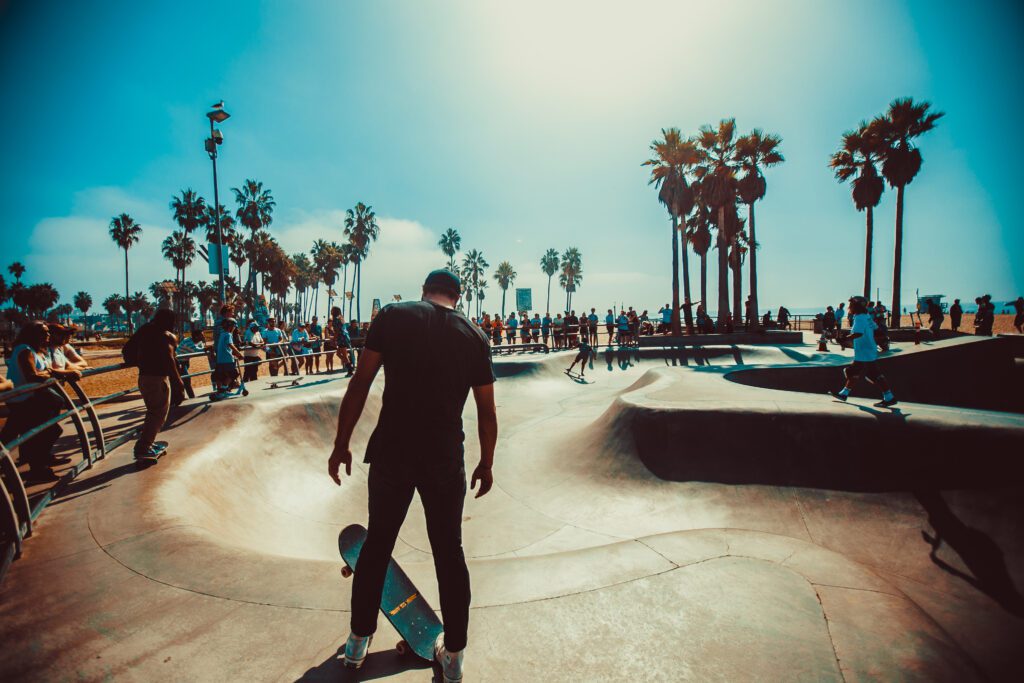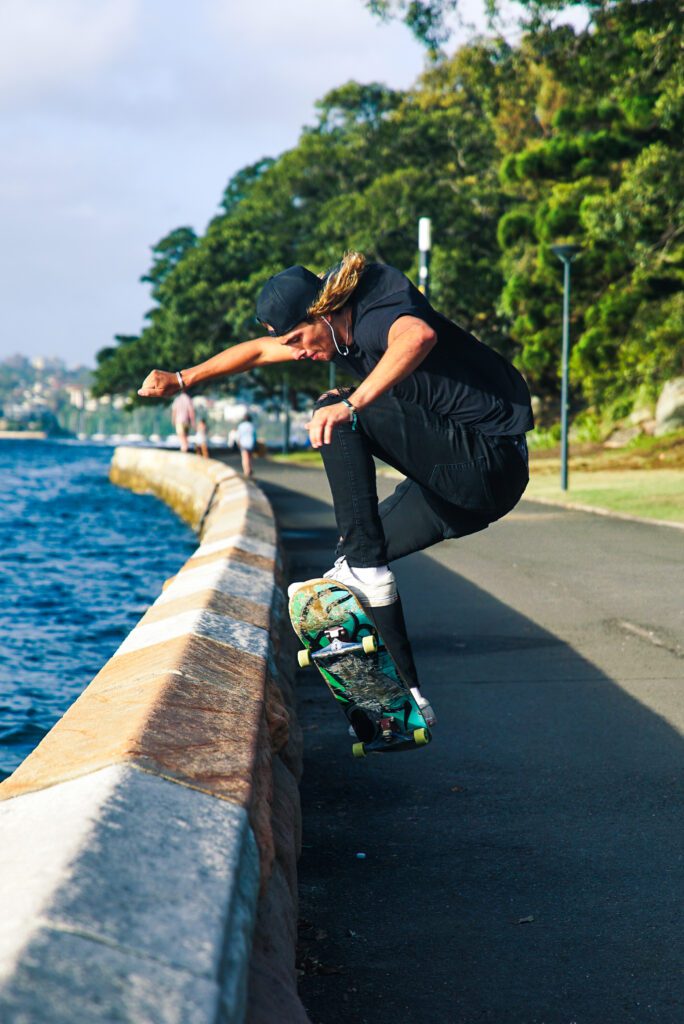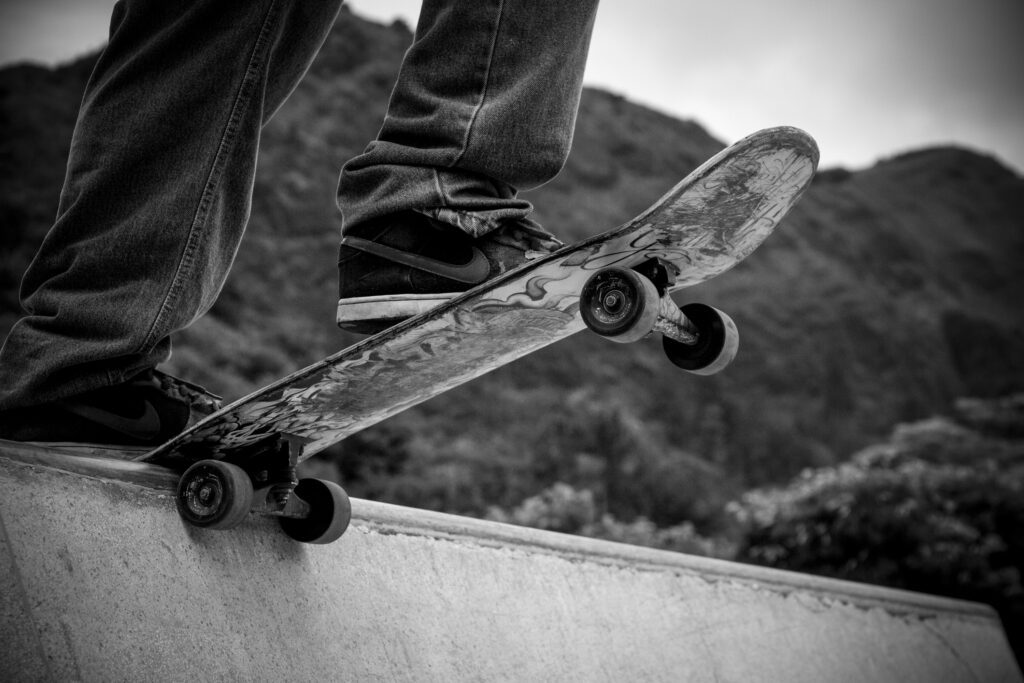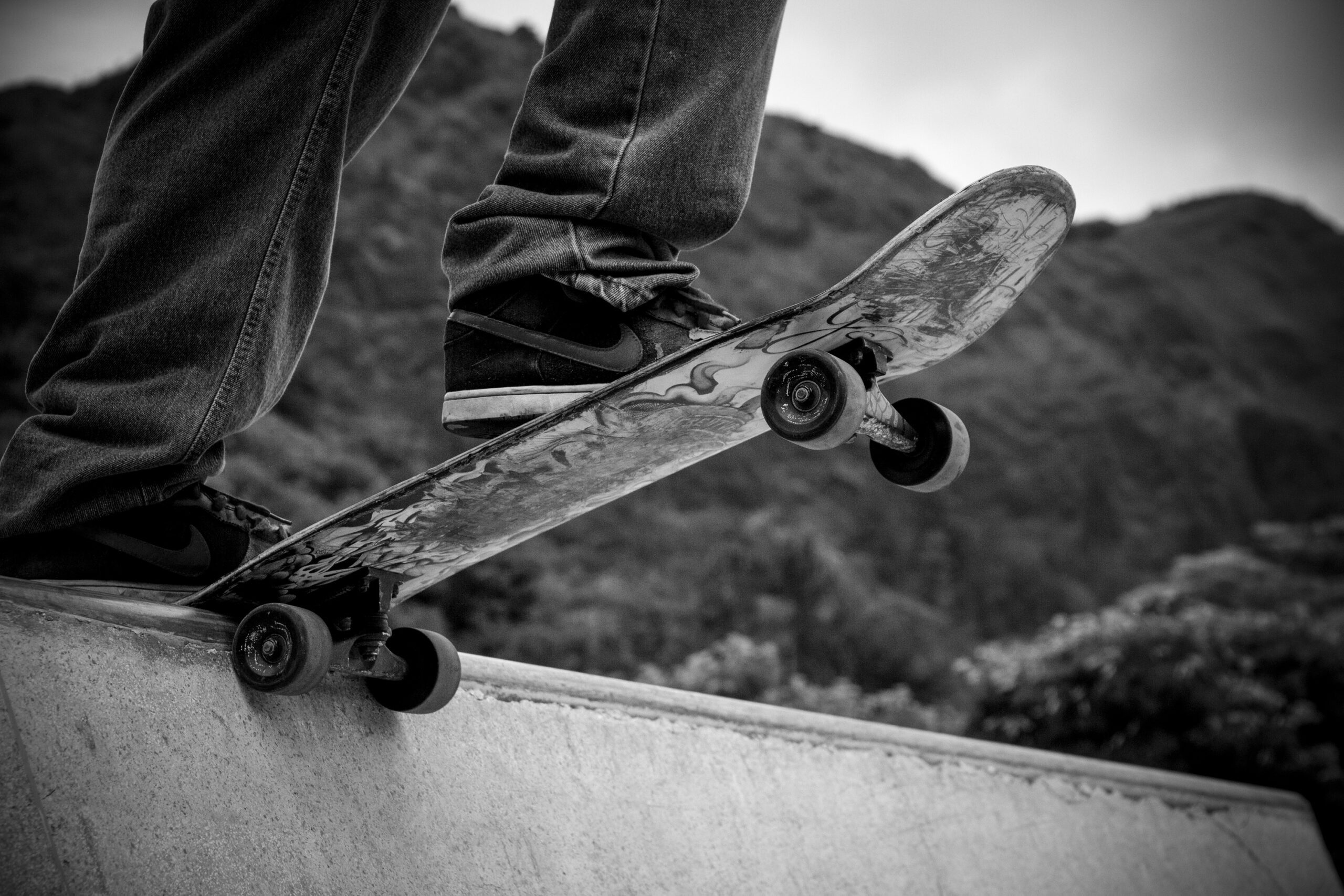Have you ever wondered what the best way to learn how to balance on a skateboard is? If you’ve ever tried skateboarding, you know that the ability to balance is crucial. Whether you’re a beginner or looking to improve your skills, finding the most effective method to master this skill is essential. In this article, we will explore different techniques and tips that can help you become a pro at balancing on a skateboard. So, if you’re ready to take your skateboarding game to the next level, keep reading to discover the best way to achieve perfect balance on your board.

Skateboard Basics
Choosing the Right Skateboard
When it comes to choosing the right skateboard, there are a few key factors to consider. Firstly, you need to find a board that suits your height and weight. A board that is too small or too large can negatively impact your balance and overall performance. Additionally, pay attention to the width of the deck, as wider boards tend to offer more stability for beginners. Lastly, consider the type of skateboard you want, whether it be a traditional street board or a longboard designed for cruising and downhill riding.
Understanding the Components
To fully understand your skateboard, it’s essential to familiarize yourself with its components. The deck is the wooden platform you stand on, while the trucks are the metal T-shaped structures that connect the wheels to the deck. The wheels provide traction and allow you to roll, and the bearings ensure smooth movement. Take some time to research and understand the characteristics of each component to gain a better understanding of how your skateboard functions.
Getting Familiar with Stance and Balance
Achieving a proper stance and balance is crucial in skateboarding. Begin by placing your feet shoulder-width apart on the deck, with your toes pointing slightly outward. Experiment to find the stance that feels most comfortable for you, whether it be regular (left foot forward) or goofy (right foot forward). Remember to keep your knees slightly bent and your weight evenly distributed to maintain balance.
Finding a Suitable Practice Area
Selecting a Smooth and Level Surface
Finding an appropriate practice area is essential for beginners. Look for a smooth and level surface, such as a parking lot or a quiet residential street with minimal traffic. Avoid rough or uneven surfaces, as they can make it more challenging to maintain your balance. Starting on a flat surface will allow you to focus solely on mastering the fundamentals of balance without any distractions.
Considering Skateparks or Indoor Facilities
Once you’ve become more comfortable with your balance and basic skills, you may want to venture into skateparks or indoor facilities. Skateparks offer a variety of ramps, rails, and obstacles that can enhance your skateboarding experience. Indoor facilities, such as skateboarding gyms, provide a controlled environment with ramps, foam pits, and other features that allow for safer progression and skill development.

Beginner Exercises for Balancing
Stationary Balancing
Stationary balancing is an excellent exercise to help you develop your balance on a skateboard. Start by placing your skateboard on a flat surface and stand on it with your feet shoulder-width apart. Practice keeping your balance by shifting your weight between your toes and heels while maintaining the center of gravity over the board. This exercise will help you gain confidence and stability, preparing you for more dynamic movements on the skateboard.
Ankle Rolls
Ankle rolls are a simple yet effective exercise for improving your balance and ankle flexibility. Stand on your skateboard with your feet parallel to each other, and slowly roll your ankles in clockwise and counterclockwise motions. This exercise will strengthen your ankle muscles and improve your stability when performing tricks or maneuvers that require precise foot positioning.
Toe Taps
To develop better control over your board and improve your balance, practice toe taps. While standing on your skateboard, lift your toes off the deck and tap the nose of the board lightly. Alternate between tapping with your left and right foot, focusing on maintaining your balance throughout the exercise. Toe taps will enhance your foot-eye coordination and help you become more comfortable with shifting your weight on the skateboard.
Improving Balance with Footwork
Kick Turns
Kick turns are essential for navigating corners and changing direction while maintaining your balance. Begin by rolling slowly and gently shifting your weight towards the tail of the skateboard. As you approach the desired direction, use your back foot to push down on the tail, causing the front wheels to lift slightly off the ground. Pivot your body and shoulders in the direction you want to turn, and use your front foot to guide the board. Practice kick turns repeatedly to improve your balance and maneuverability.
Footwork Drills
Footwork drills are excellent exercises for improving your balance and control over the skateboard. Start by setting up a series of cones or markers in a straight line, roughly a foot apart. Ride slowly and carefully maneuver between the markers by moving your feet and shifting your weight. This exercise will help you develop better coordination and proprioception, allowing for smoother and more controlled movements on the skateboard.
Pivoting
Pivoting is a technique that involves rotating the skateboard using your trucks while keeping one set of wheels stationary. To practice pivoting, find a flat surface and stand with your feet slightly wider than shoulder-width apart. Shift your weight onto your toes and rotate your shoulders in the desired direction. As you pivot, keep your front wheels stationary while allowing the back wheels to move with your body. Pivoting exercises will improve your balance, turning ability, and overall board control.

Developing Core Strength
Strengthening Exercises
To improve your balance and stability on a skateboard, it is crucial to develop core strength. Incorporate exercises like planks, squats, and lunges into your routine to target your abdominal, back, and leg muscles. These exercises will not only enhance your overall body strength but also promote better posture and balance while skateboarding.
Yoga and Balance Training
Yoga and balance training can be incredibly beneficial for skateboarders looking to improve their balance and body awareness. Engaging in activities that promote flexibility, stability, and mindfulness, such as yoga poses like tree pose or one-legged balances, can help strengthen your core, enhance your proprioception, and refine your balance on the skateboard. Consider incorporating a yoga or balance training practice into your routine to further enhance your skateboarding abilities.
Utilizing Aids and Support
Using Support Bars or Walls
When starting out, using support bars or walls can greatly assist in developing your balance on a skateboard. Find a stable object, such as a railing or wall, and hold onto it while practicing your balance and foot positioning. This will provide additional support and reassurance as you gain confidence on the board. Gradually decrease your reliance on the support as you become more comfortable and independent in maintaining your balance.
Skateboard Trainers and Balance Boards
Skateboard trainers and balance boards are excellent tools for improving balance and stability. Skateboard trainers are devices that attach to the underside of your skateboard, preventing the wheels from rolling freely. They help beginners gain confidence by allowing them to practice balancing and maneuvering without the fear of falling. Balance boards, on the other hand, are wooden or plastic platforms that simulate the motion of a skateboard. Practicing on a balance board can enhance your overall balance and core strength, making you more surefooted when skateboarding.
Progressive Techniques for Balance
Turning and Carving
Once you’ve mastered the basics of balance, it’s time to focus on turning and carving. Turning involves shifting your weight and applying pressure on the edges of your skateboard to initiate a turn. Carving, on the other hand, involves making wide, swooping turns by leaning your body in the direction of the turn while applying pressure on your toes or heels. Practice these techniques in a controlled manner, gradually increasing your speed and adapting to different terrains to improve your overall balance and control.
Manuals and Nose Manuals
Learning manuals and nose manuals can significantly enhance your balance and board control. A manual is a maneuver where you balance on your back wheels while rolling, while a nose manual involves balancing on the front wheels. Start by practicing manuals on a flat surface, gradually progressing to slightly inclined surfaces. These tricks require precise weight distribution and constant adjustment, forcing you to maintain impeccable balance and coordination.
Powerslides and Reverts
Powerslides and reverts are advanced techniques that further challenge your balance while adding style to your skateboarding. Powerslides involve sliding your skateboard sideways while maintaining control, while reverts involve rapidly rotating your skateboard 180 degrees without losing balance. These tricks require a combination of precise weight distribution, quick footwork, and excellent balance. As you refine these techniques, you’ll develop greater balance and overall board control.
Safety Tips and Precautions
Wearing Protective Gear
Safety should always be a top priority when skateboarding. Make sure to wear appropriate protective gear, including a helmet, knee pads, elbow pads, and wrist guards. These safety measures can significantly reduce the risk of injuries while you’re learning and mastering your balance on a skateboard. Additionally, wearing comfortable and supportive footwear with good traction will enhance your grip on the skateboard, further ensuring your safety.
Starting Slowly and Gradually
As with any sport or activity, it’s important to progress slowly and gradually when learning how to balance on a skateboard. Rushing into complex maneuvers or attempting advanced tricks before mastering the basics can lead to frustration and potential injuries. Take your time to build a solid foundation of balance and gradually increase the difficulty of exercises and tricks. This approach will not only improve your balance but also allow for a safer and more enjoyable learning experience.
Asking for Assistance
Don’t hesitate to ask for assistance when learning how to balance on a skateboard. Engage with experienced skateboarders or seek guidance from seasoned professionals who can provide valuable tips and advice. They can offer insights into proper techniques, share their own experiences, and help identify areas where you can improve your balance. Learning from others can significantly accelerate your progress and prevent you from developing bad habits or incorrect form.
Seeking Guidance and Lessons
Taking Skateboarding Classes
For those who prefer a more structured approach to learning, enrolling in skateboarding classes can be highly beneficial. Skateboarding classes are often led by experienced instructors who can guide you through the fundamentals of balance and provide personalized feedback. These classes are designed to cater to all skill levels, from beginners to advanced riders, making them a great option for anyone looking to improve their balance on a skateboard.
Getting Feedback from Experienced Skateboarders
Another valuable resource for enhancing your balance on a skateboard is seeking feedback from experienced skateboarders. Joining a skateboarding community or connecting with fellow riders can provide opportunities for valuable insights and constructive criticism. By sharing your progress and seeking feedback, you’ll gain a fresh perspective on your balance and discover areas for improvement. Embrace the skateboarding community and let their wisdom and support elevate your balance game.
In conclusion, learning how to balance on a skateboard is a process that requires patience, practice, and dedication. By choosing the right skateboard, understanding its components, and developing a proper stance and balance, you’ll set yourself up for success. Finding a suitable practice area, engaging in beginner exercises, and gradually progressing to more advanced techniques will help you improve your balance and overall skateboarding skills. Remember to prioritize safety, seek guidance, and enjoy the journey as you push your limits and unlock your full potential on the skateboard.

